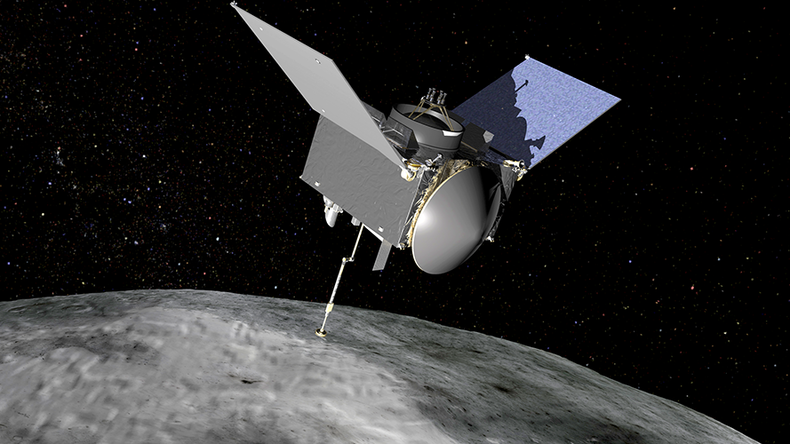NASA counts down to premier mission to bring back piece of ‘Armageddon’ asteroid

NASA is mere weeks away from sending its very first mission to an “Armageddon” asteroid that may one day hit Earth. Scientists look forward to grabbing a piece of the asteroid, which could hold answers to the mystery of how life began.
Save the date, September 8, when the OSIRIS-REx spacecraft will blast off from Cape Canaveral Air Force Station en route to Bennu, one of 500,000 known asteroids that NASA picked for its new asteroid exploration mission.
My main scientist, Dante Lauretta, on why we want to bring a sample back to Earth. https://t.co/Nabd5KpStc
— OSIRIS-REx (@OSIRISREx) August 17, 2016
OSIRIS-Rex stands for the Origins, Spectral Interpretation, Resource Identification, Security-Regolith Explorer. It is a 4,650-pound (2,110-kilogram) fully-fueled spacecraft that will tear off a piece of the astronomical object to eventually bring it back to Earth. The team says the spacecraft has a long seven-year journey ahead of it.
First, it will take OSIRIS-Rex two years to reach Bennu before it can start its “careful survey,” which is expected to last for another few years.
“OSIRIS-REx will collect between 2 and 70 ounces (about 60 to 2,000 grams) of surface material with its robotic arm and return the sample to Earth via a detachable capsule in 2023,” NASA said in a press release.
Besides the robotic arm, or touch-and-go sample acquisition mechanism in NASA language, the spacecraft is equipped with three cameras, a laser altimeter to measure the distance to Bennu and map its shape, as well as several spectrometers – the necessary equipment for studying the minor planet.
"Our upcoming launch is the culmination of a tremendous amount of effort from an extremely dedicated team of scientists, engineers, technicians, finance and support personnel," said OSIRIS-REx Project Manager Mike Donnelly at Goddard. "I'm incredibly proud of this team and look forward to launching the mission's journey to Bennu and back."
READ MORE: NASA to land on asteroid that could have once seeded life, but may now destroy Earth
Discovered in 1999, Bennu has recently become a subject of concern because of its potential to one day hit Earth. Even though it is said to be very unlikely, scientists say its impact would be catastrophic – equivalent to setting off three-billion tons of high explosives, similar in potential effect to the asteroid that may have wiped out most of the life on the planet 66 million years ago. However, that planetoid is thought to have been about 6.2 miles (10 kilometers) across. It is estimated that the chance of Bennu hitting Earth is at about one in 2,700 between the years 2175 and 2196.
Bennu is really old (~4.5 billion yrs), carbon-rich, relatively close to Earth & a good size for us to take a sample https://t.co/36VFd48Oj6
— OSIRIS-REx (@OSIRISREx) August 17, 2016
This is why NASA is also working hard to learn how to “redirect” asteroids away from our plant. Earlier this week, the agency announced that it approved the Asteroid Redirect Mission (ARM) to proceed to the next stage.
READ MORE: NASA aims to pluck boulder off asteroid & bring it to moon (VIDEOS)
ARM is a first-ever robotic mission to a large near-Earth asteroid, collect a multi-ton rock from its surface, and put it into another orbit around the moon, using its gravity for an assist.
The complex mission is currently targeted to launch in 2021, at a cost of $1.4 billion, NASA said in a statement.












